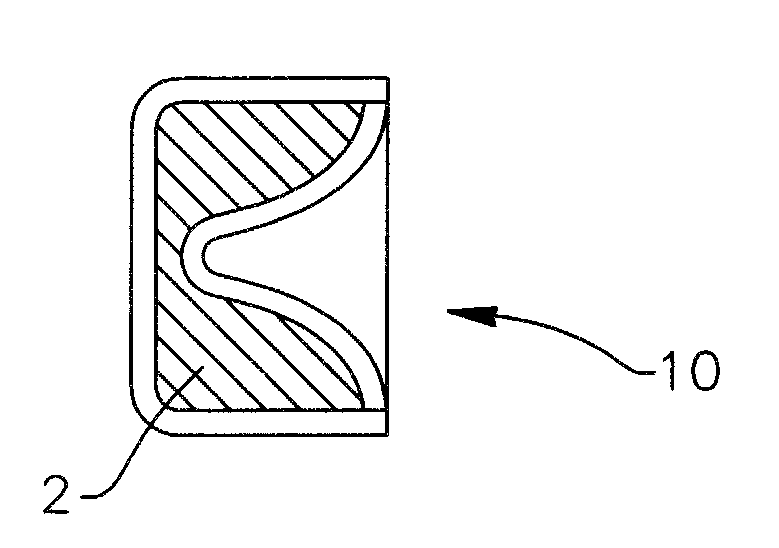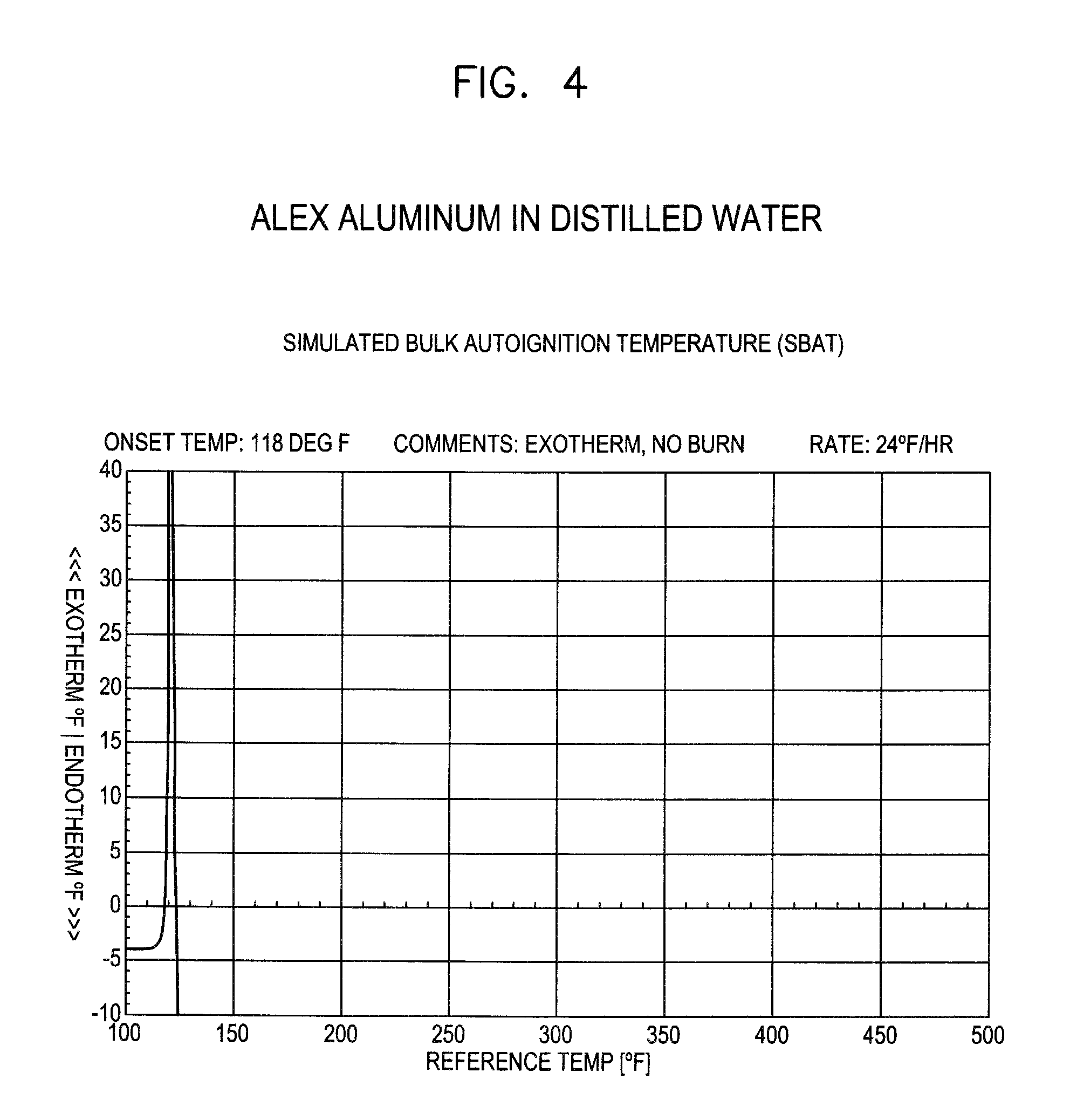Non-toxic percussion primers and methods of preparing the same
a technology of percussion primers and compositions, which is applied in the direction of explosives, weaving, ammunition fuzes, etc., can solve the problems of poor reliability of ddnp-based primers, limited use of percussion primers containing toxic metal compounds in firing ranges and other locales of firearms use, and limited availability of primary explosives
- Summary
- Abstract
- Description
- Claims
- Application Information
AI Technical Summary
Problems solved by technology
Method used
Image
Examples
example 1
Nitrocellulose 10-40 wt %
Aluminum 5-20 wt % (average particle size 0.1 micron)
Aluminum 0-15 wt % (standard mesh aluminum as common to primer mixes)
Tetracene 0-10 wt %
Bismuth Trioxide 20-75 wt %
Gum Tragacanth 0.1-1.0 wt %
[0117]The nitrocellulose in an amount of 30 grams was placed water-wet in a mixing apparatus. Water-wet tetracene, 5 g, was added to the mixture and further mixed until the tetracene was not visible. Nano-aluminum powder, 10 g, was added to the water-wet nitrocellulose / tetracene blend and mixed until homogeneous. Bismuth trioxide, 54 g, was dry blended with 1 g of gum tragacanth and the resultant dry blend was added to the wet explosive mixture, and the resultant blend was then mixed until homogeneous. The final mixture was removed and stored cool in conductive containers.
example 2
[0118]Various buffer systems were tested using the simulated bulk autoignition temperature (SBAT) test. Simple acidic buffers provided some protection of nano-aluminum particles. However, specific dual buffer systems exhibited significantly higher temperatures for the onset of hydrolysis. The sodium hydrogen phosphate and citric acid dual buffer system exhibited significantly higher temperatures before hydrolysis occurred. This is well above stability requirements for current primer mix and propellants. As seen in the SBAT charts, even at pH=8.0, onset with this system is delayed to 222° F. (105.6° C.). At pH=5.0 onset is effectively stopped.
[0119]
TABLE 7ALEX ® Aluminum in WaterSBAT onset TemperatureBufferpH° F. (° C.) 1) Distilled water only118° F. (47.8° C.) 2) Sodium acetate / acetic acid5.0139° F. (59.4° C.) 3) Potassium phosphate / borax6.6137° F. (58.3° C.) 4) Potassium phosphate / borax8.0150° F. (65.6° C.) 5) Sodium hydroxide / acetic5.02131° F. (55° C.)acid / phosphoric acid / boricaci...
PUM
| Property | Measurement | Unit |
|---|---|---|
| particle size | aaaaa | aaaaa |
| particle size | aaaaa | aaaaa |
| particle size | aaaaa | aaaaa |
Abstract
Description
Claims
Application Information
 Login to View More
Login to View More - R&D
- Intellectual Property
- Life Sciences
- Materials
- Tech Scout
- Unparalleled Data Quality
- Higher Quality Content
- 60% Fewer Hallucinations
Browse by: Latest US Patents, China's latest patents, Technical Efficacy Thesaurus, Application Domain, Technology Topic, Popular Technical Reports.
© 2025 PatSnap. All rights reserved.Legal|Privacy policy|Modern Slavery Act Transparency Statement|Sitemap|About US| Contact US: help@patsnap.com



